
This circuit will trigger with any fluid with a resistance under 900K between the maximum separation distance of the probes. Let me explain further. The circuit uses a 4050B CMOS hex buffer working on a 5 volt supply. All gates are biased off by the 10M resistors connected between ground and buffer input. The "common" probe the topmost probe above probe 1 in the diagram above is connected to the positive 5 volt supply. If probe 1 is spaced 1 cm away from the common probe and tap water at 25 ?C is detected between the probes (a resistance of 20k) then the top gate is activated and the LED 1 will light. Similarly if probe 2 at 2 cm distance from the common probe detects water, LED 2 will light and so on. Switch 1 is used to select which output from the hex buffer will trigger the audible oscillator made from the gates of a CMOS 4011B IC.
Placement of Probes:
As 7 wires are needed for the probe I reccommend the use of 8 way computer ribbon cable. The first two wires may be doubled and act as the common probe wire. Each subsequent wire may be cut to required length, if required a couple of millimetres of insulation may be stripped back, though the open "cut off" wire end should be sufficient to act as the probe. The fluid and distance between probe 6 and the common probe wire must be less than 900k. This is because any voltage below 0.5 Volt is detected by the CMOS IC as logic 0. A quick potential check using a 900k resistance and the divider formed with the 10M resistor at the input proves this point:
5 x (0.9 / (0.9+10) = 0.41 Volt.
As this voltage is below 0.5 volt it is interpreted as a logic 0 and the LED will light. If measuring tap water at 25 ?C then the distance between top probe and common may be up to 45 cm apart. For other temperatures and fluids, it is advisable to use an ohmmeter first. When placing the probes the common probe must be the lowest placed probe, as the water level rises, it will first pass probe 1, then 2 and finally probe 6.
- 器電路圖(7467)
- 圖文水面(5578)
相關(guān)推薦
斷線(xiàn)報(bào)警器電路圖
液體點(diǎn)滴自動(dòng)加溫報(bào)警器電路圖
 2574
2574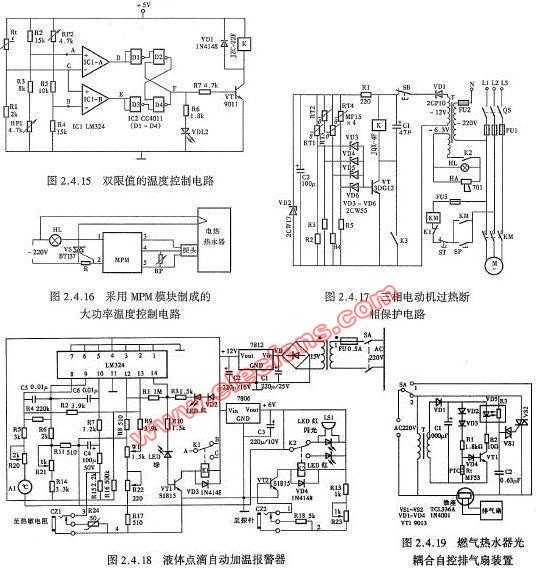
自制報(bào)警器電路圖
 7396
7396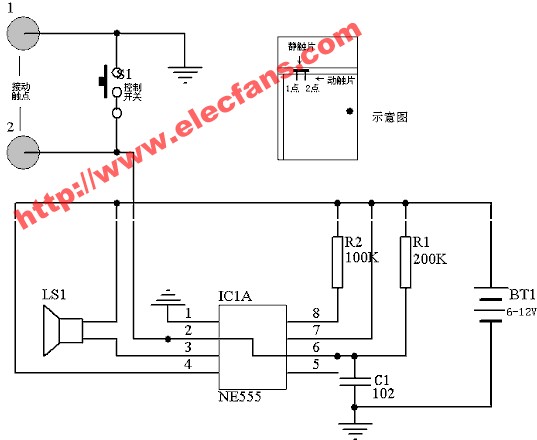
無(wú)線(xiàn)紅外線(xiàn)報(bào)警器電路圖
 2732
2732 電子發(fā)燒友App
電子發(fā)燒友App







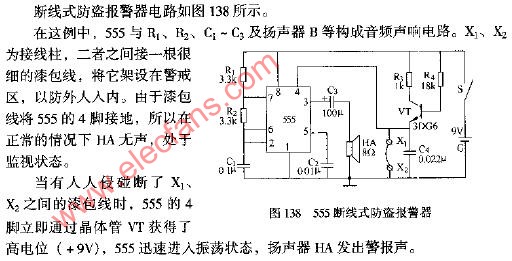
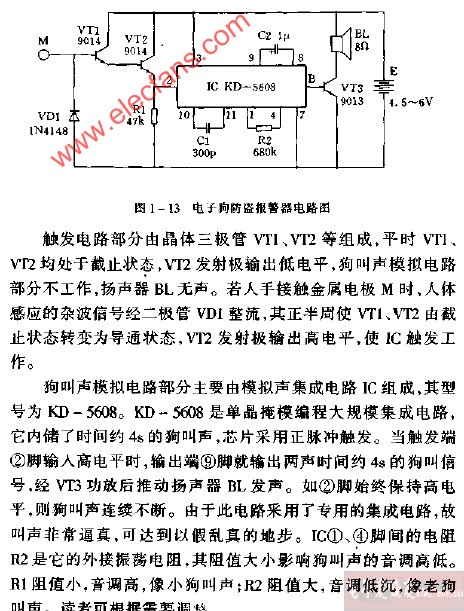
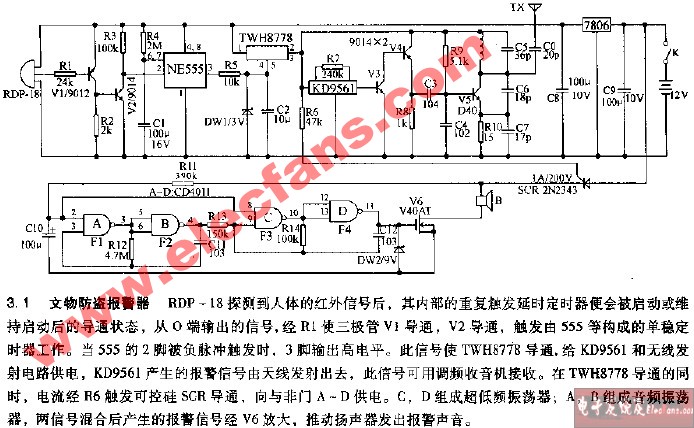
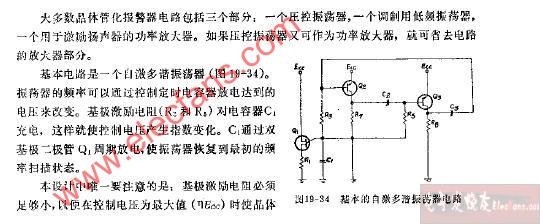
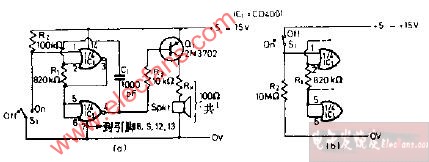
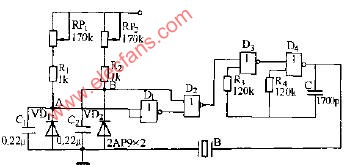
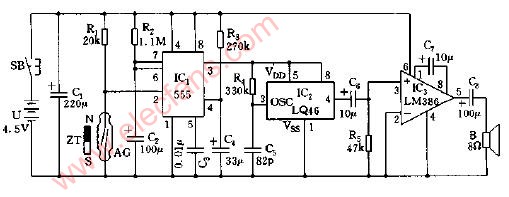
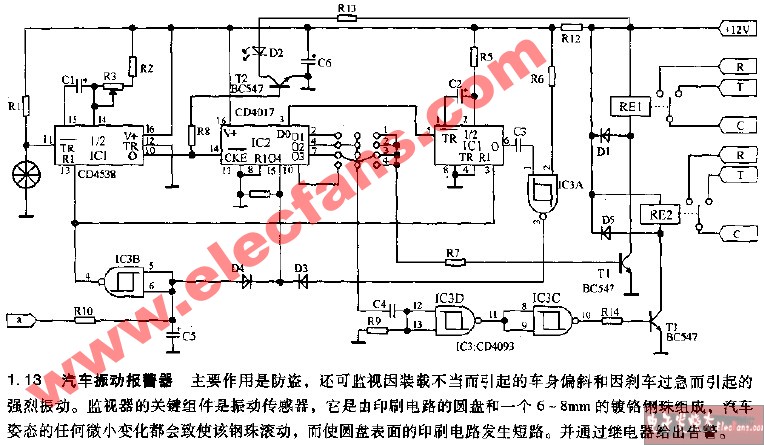

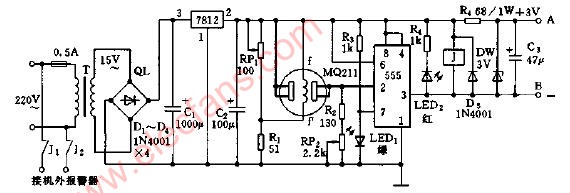
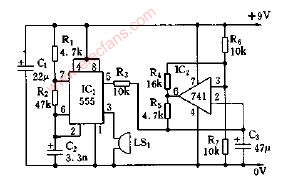
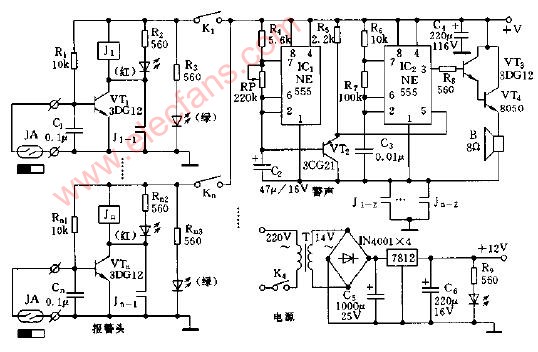
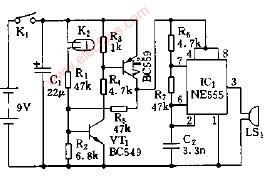
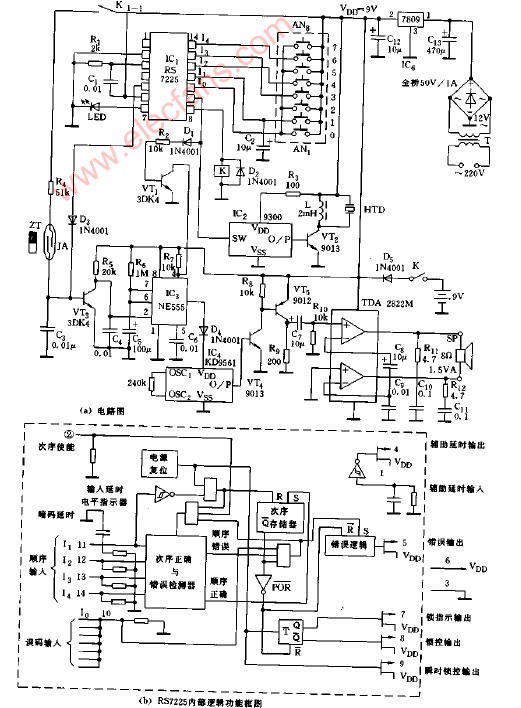
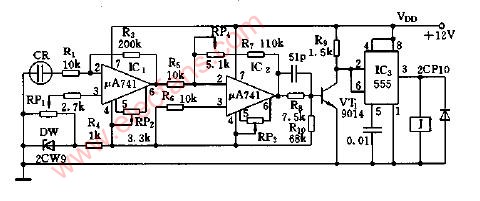
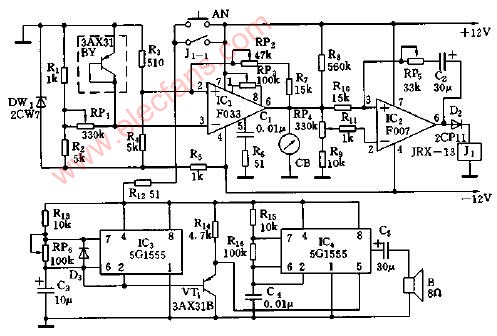

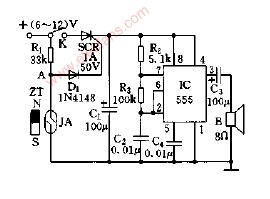

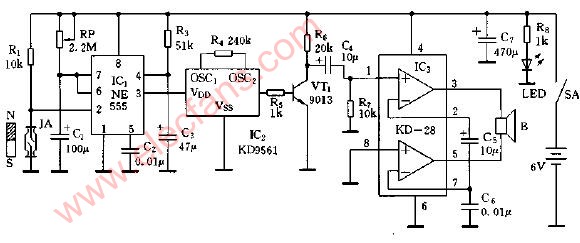
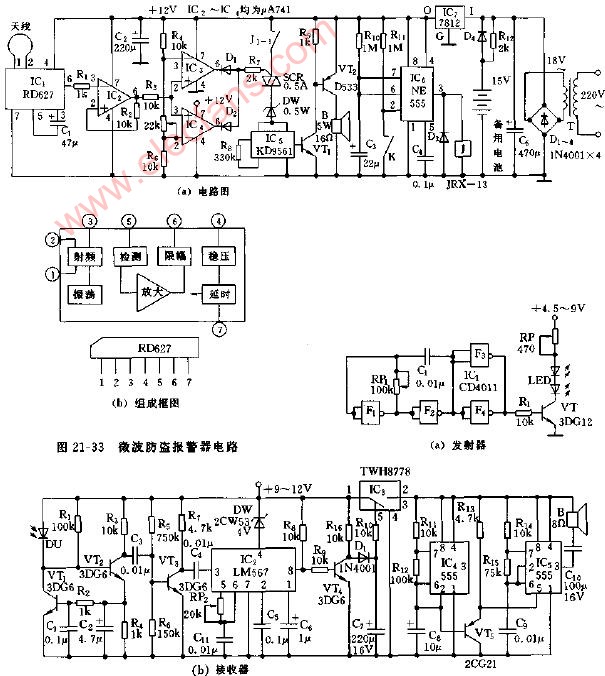
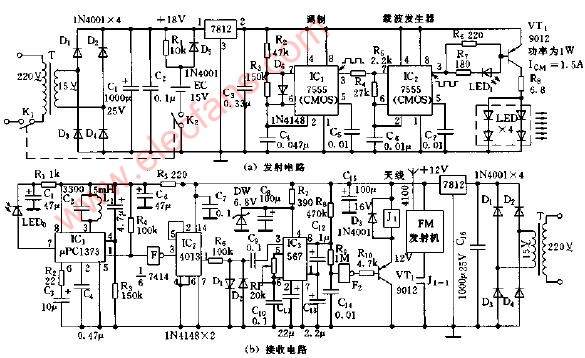
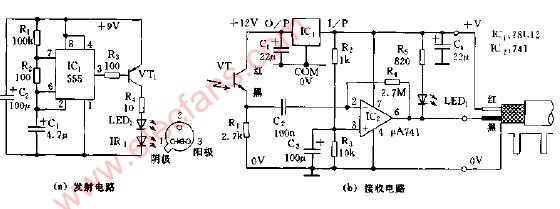
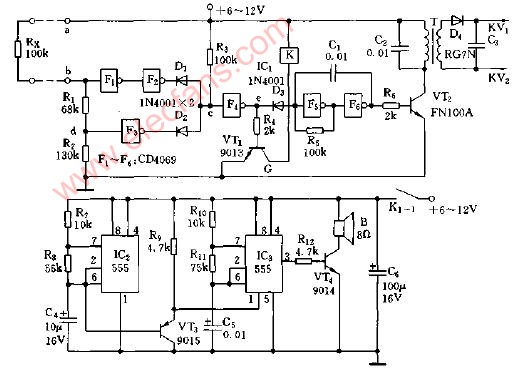
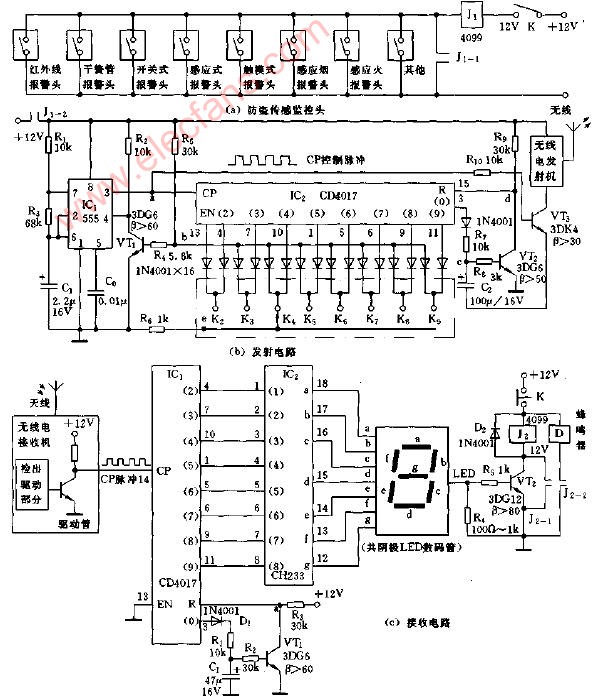

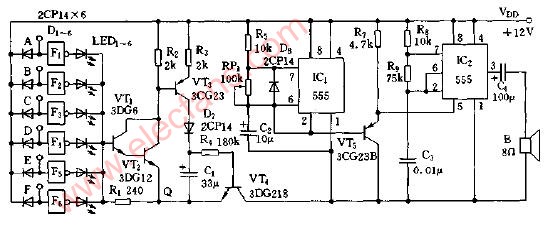
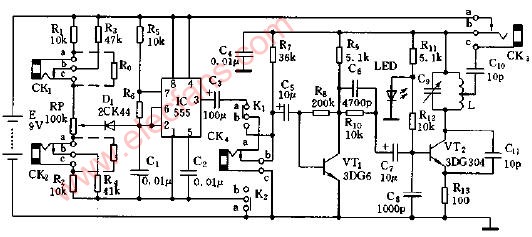
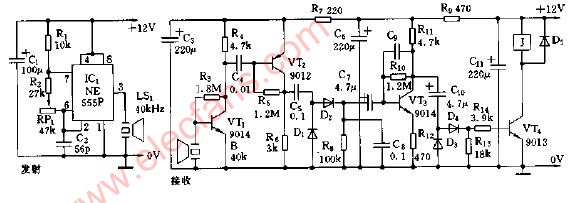
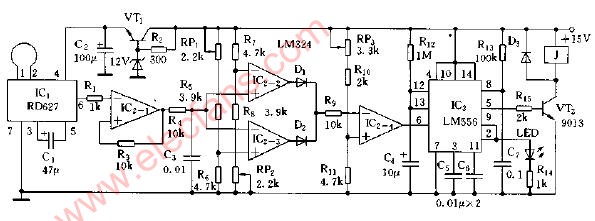
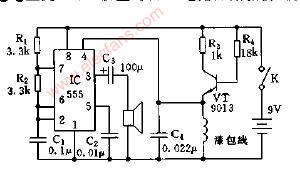
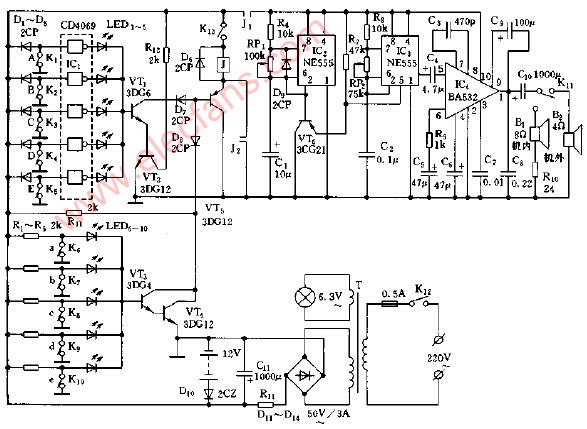
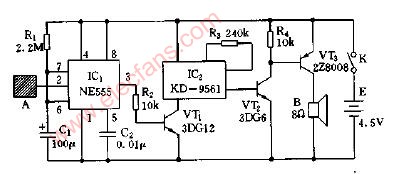
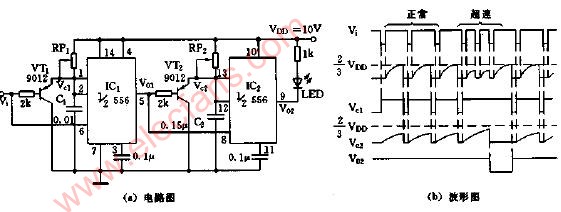
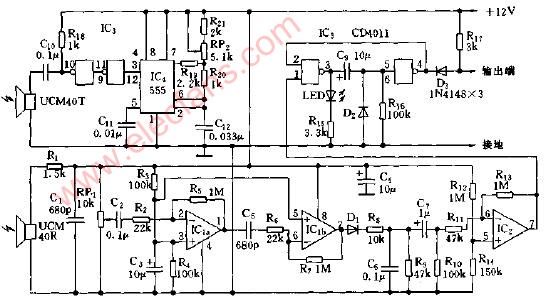
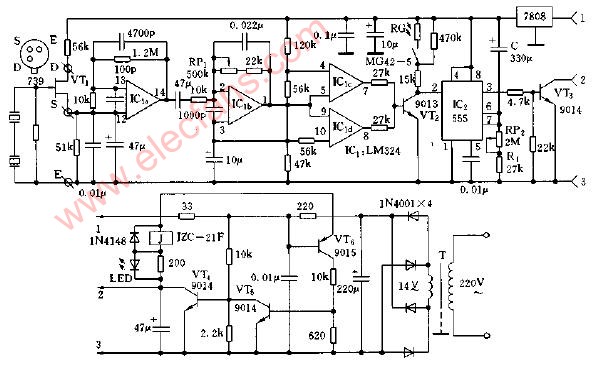

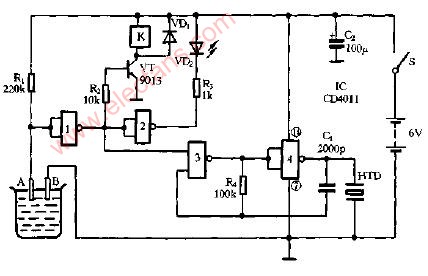
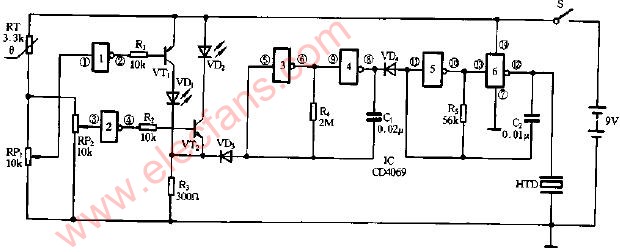
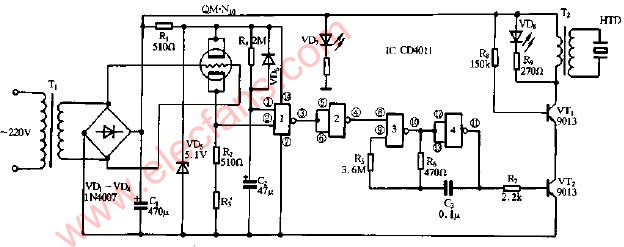

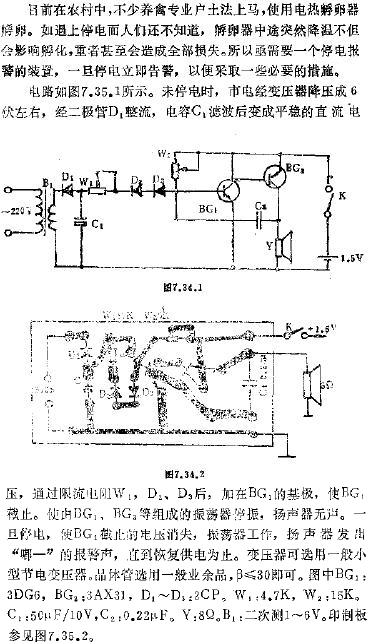
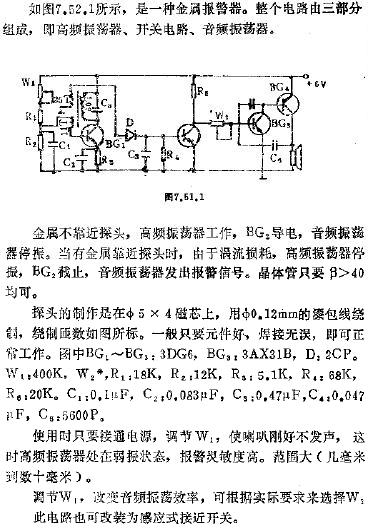
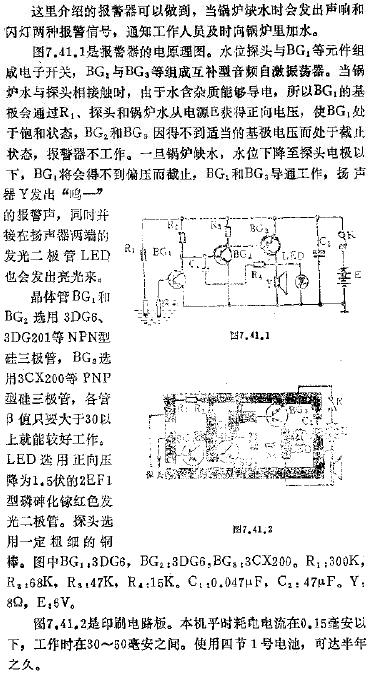
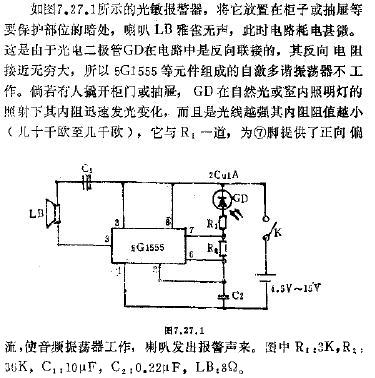
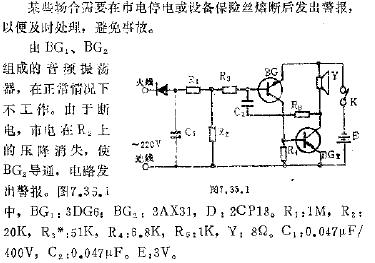
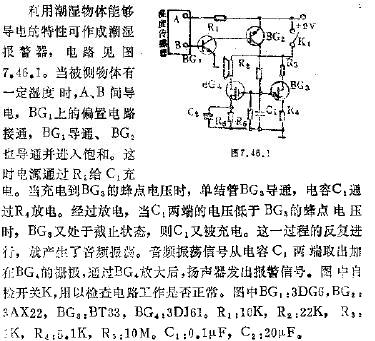
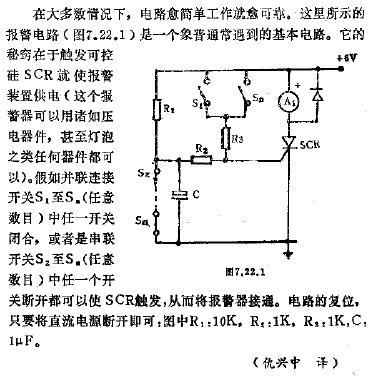
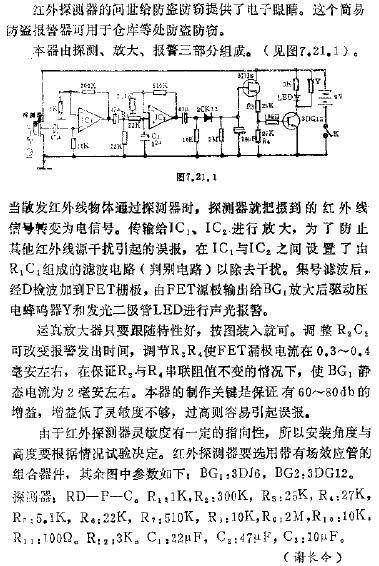
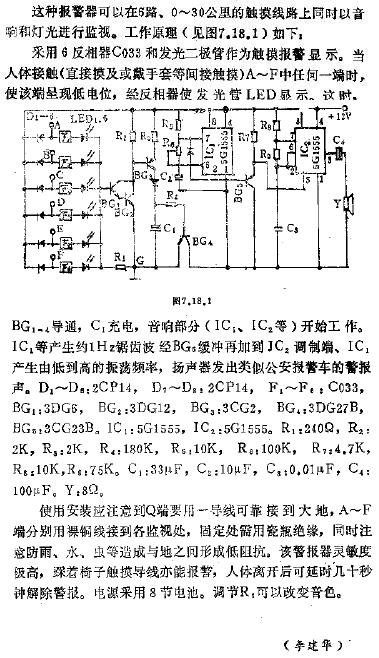
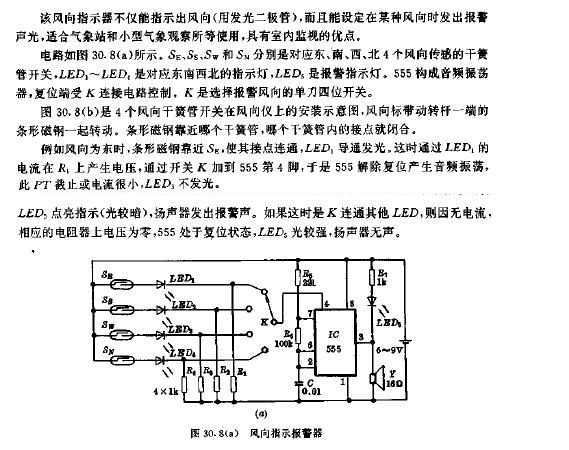
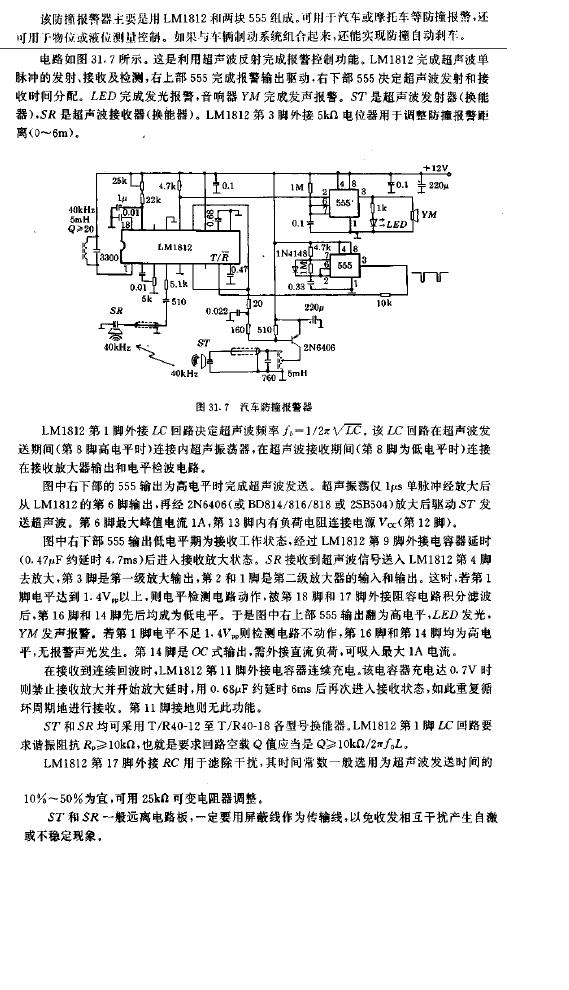
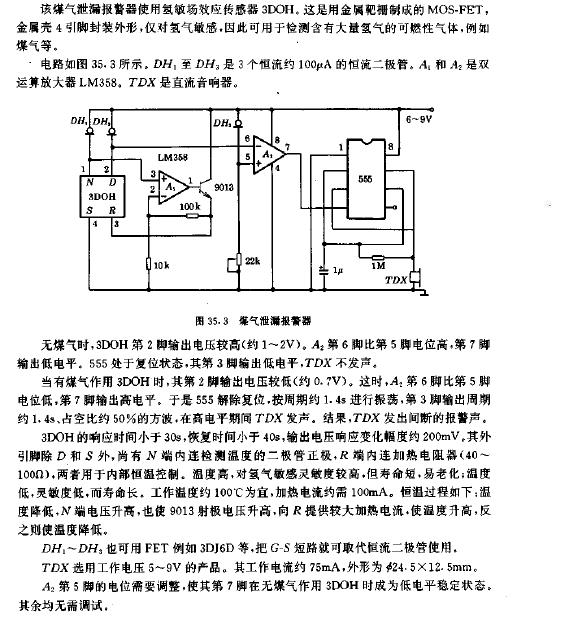
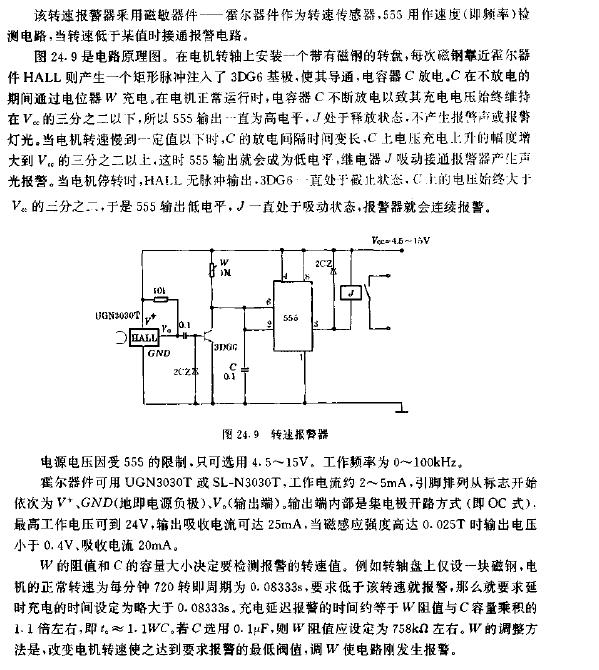

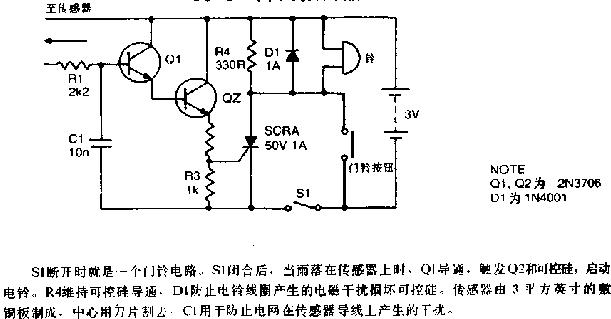
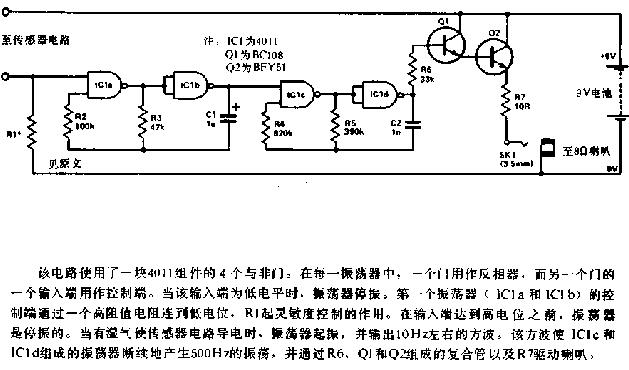

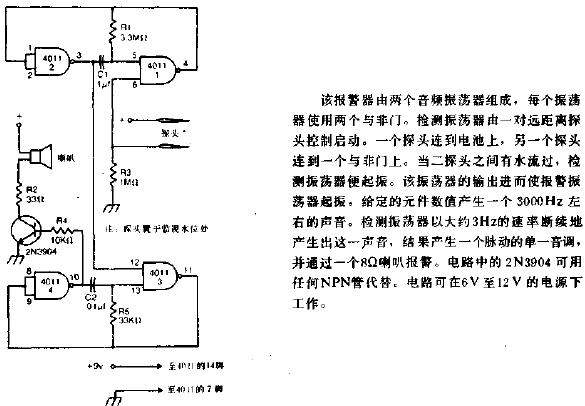
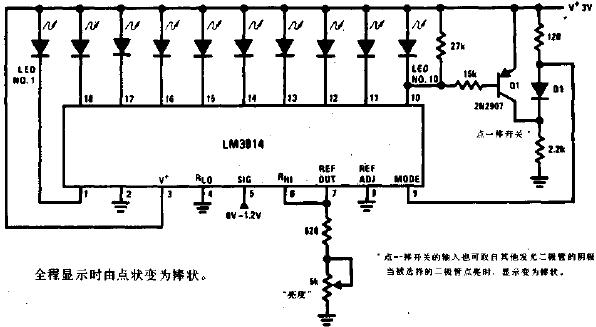
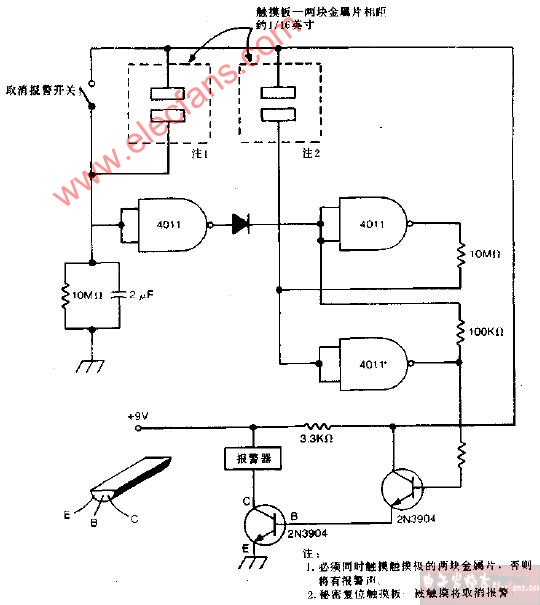
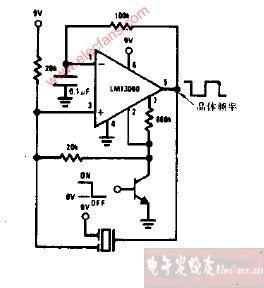
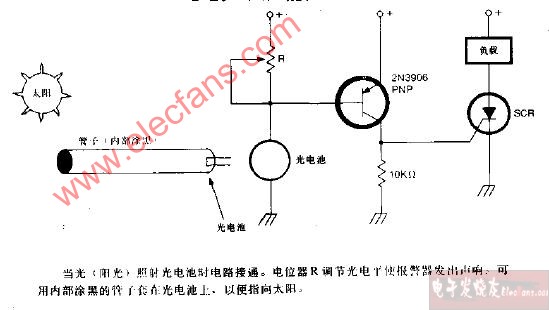
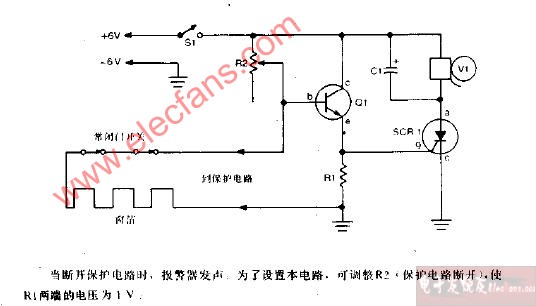
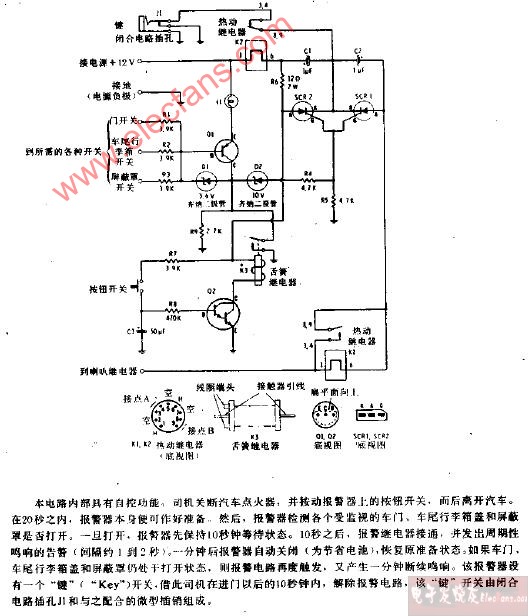
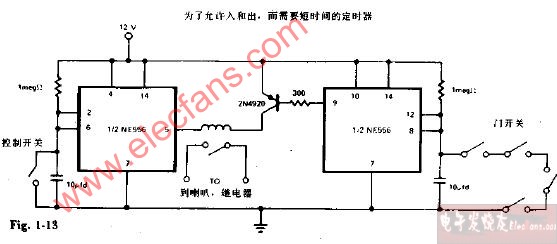
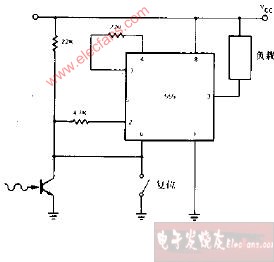
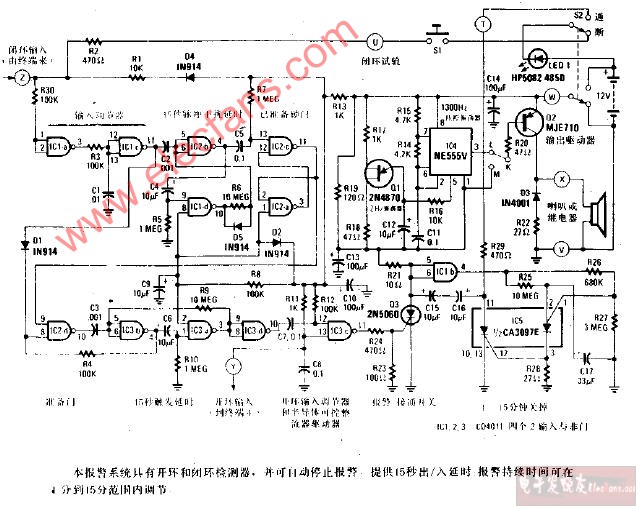
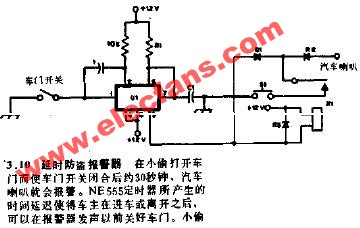
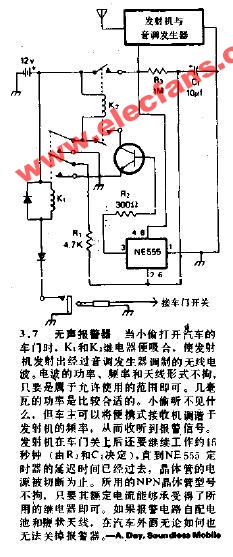



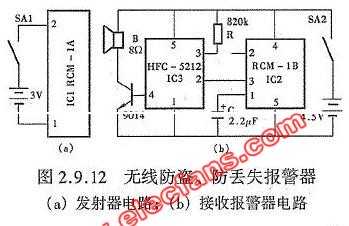


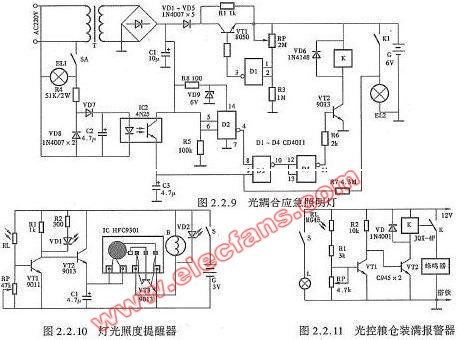
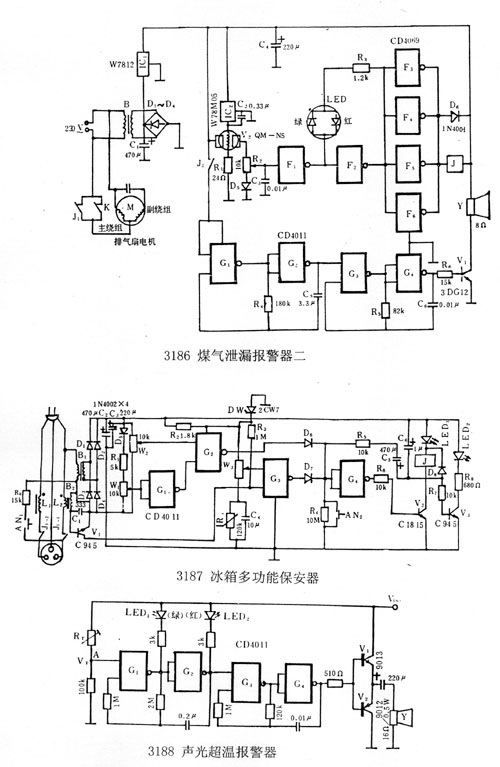
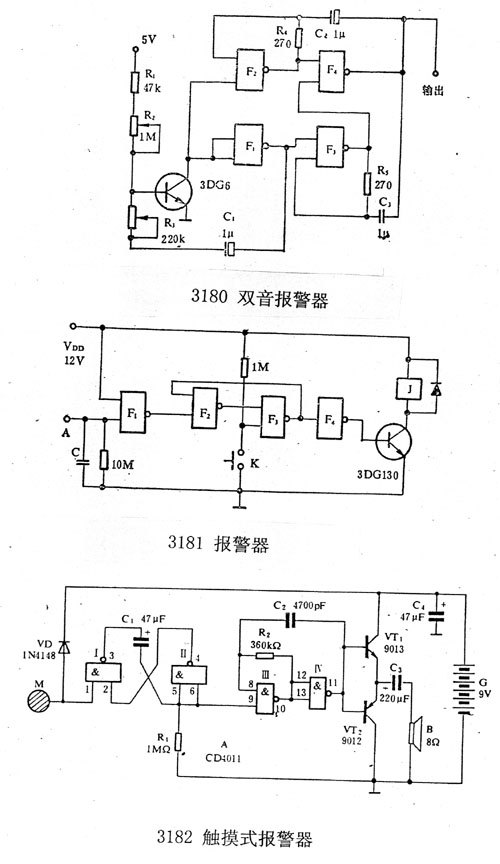

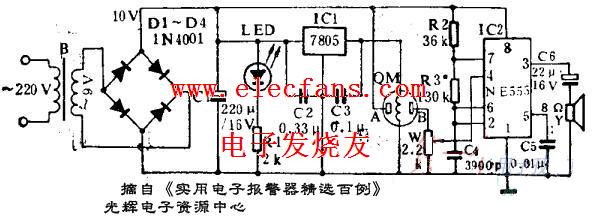

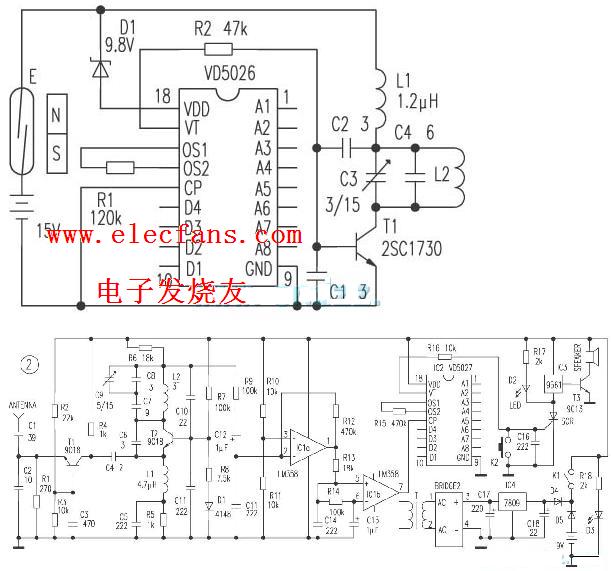
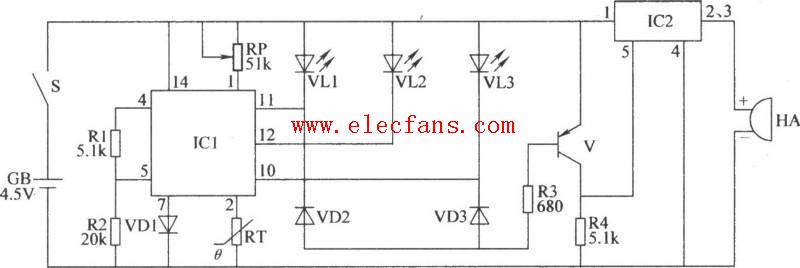
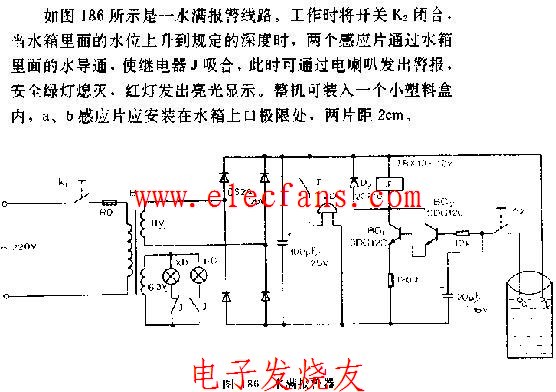
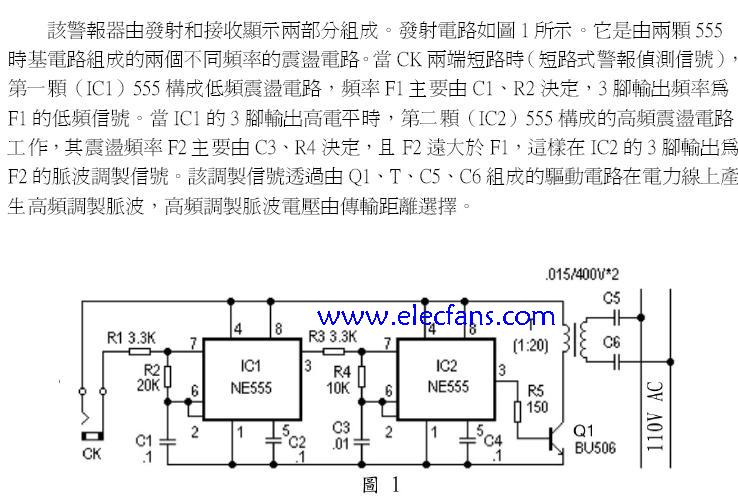
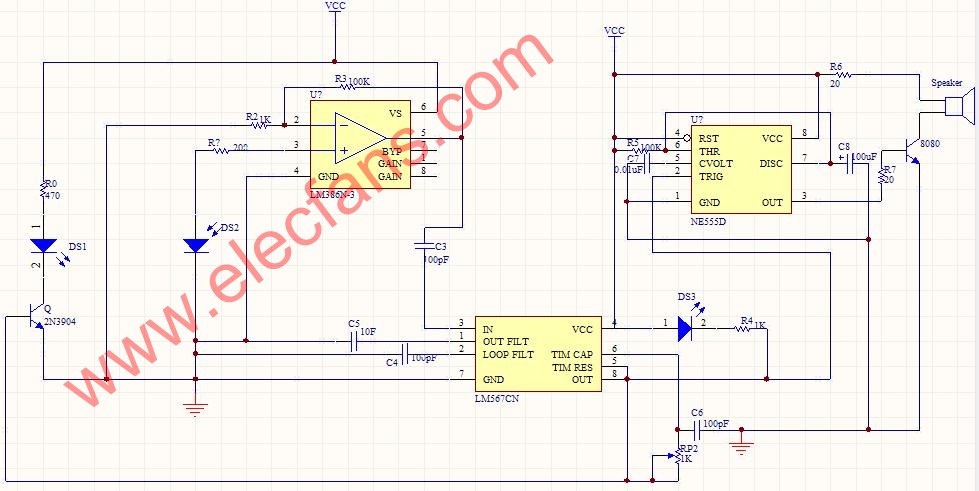










評(píng)論